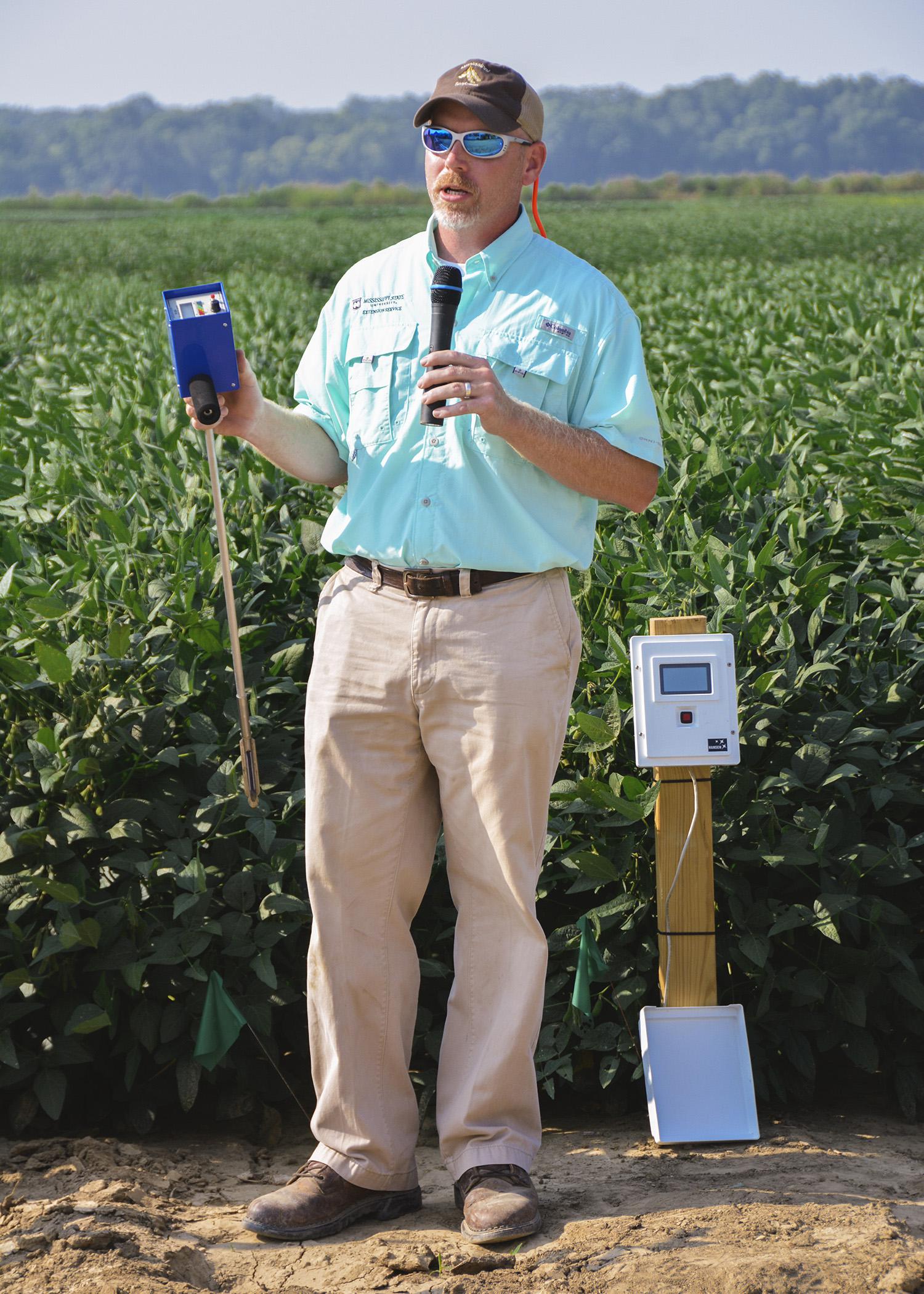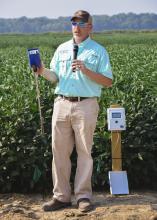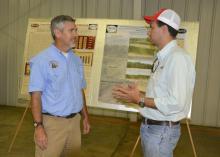Information Possibly Outdated
The information presented on this page was originally released on August 11, 2014. It may not be outdated, but please search our site for more current information. If you plan to quote or reference this information in a publication, please check with the Extension specialist or author before proceeding.
MSU scientists study, report about agricultural concerns
VERONA -- Row-crop farmers and agricultural consultants heard reports on some of the challenges researchers are studying at the North Mississippi Research and Extension Center during the Aug. 7 field day.
Irrigation decisions, variety selections, planting dates, crop residue management and tillage were a few of the issues addressed.
“Much of the research here in the Experiment Station fields is based on requests from growers themselves,” said Steve Martin, head of the North Mississippi Research and Extension Center. “We use this time in the middle of the growing season to tell farmers and consultants what we are discovering with different management choices and techniques.”
Jason Krutz, an irrigation specialist at MSU’s Delta Research and Extension Center in Stoneville, told field day participants that irrigation remains a top issue in Mississippi fields.
“We are studying which growth stages tolerate more stress than others and how traditional irrigation methods compare to watering based on what soil moisture sensors recommend,” he said. “We used about 40 percent less water on fields when sensors were used.”
Krutz strongly recommended sensor use in fields with pivot irrigation.
“Growers will make far better decisions when using sensors,” he said.
This year, MSU invited a plant physiologist from the University of Arkansas to explain a multistate effort evaluating the developmental stages of soybeans of different maturities and planting dates.
Larry Purcell said the 2014 crop is the third crop in the three-year study. Ten irrigated research plots are located in Texas, Louisiana, Arkansas, Missouri, Tennessee and Mississippi.
“Plants are evaluated three times a week for their developmental stages and the seed quality, seed grade and yield at harvest. In all, we are looking at about 7,000 observations and collecting a tremendous amount of data,” Purcell said.
Mississippi Agricultural and Forestry Experiment Station researcher Normie Buerhing reported on a crop residue management and tillage project. Researchers studied burning and not burning corn plants after harvest.
“We found that on fields where corn stalks from the previous season were not burned, we were able to produce 6 bushels per acre more soybeans than burning corn stalks,” Buehring said.
Darrin Dodds, state cotton specialist, said researchers have been evaluating varieties, weed control, resistance and sprayer issues including drift.
“We are very aware of resistance concerns,” he said. “Resistance can develop in anything.”
Resistance concerns were a primary issue for a dozen visitors from Brazil.
Cuzzi Jonas of Brazil, a product manager for FMC Corporation, was one of the leaders of the group made up primarily of university researchers.
“Our researchers are working on weed resistance to chemical controls and what solutions are available,” he said. “We don’t have an Extension Service in Brazil, so we also have been interested to see how the growers in the U.S. get information from the universities.”
The next field day at the North Mississippi Research and Extension Center in Verona is the Fall Garden Tour from 8 a.m. to 2 p.m. on Sept. 20. For more information, call 662-566-2201.








